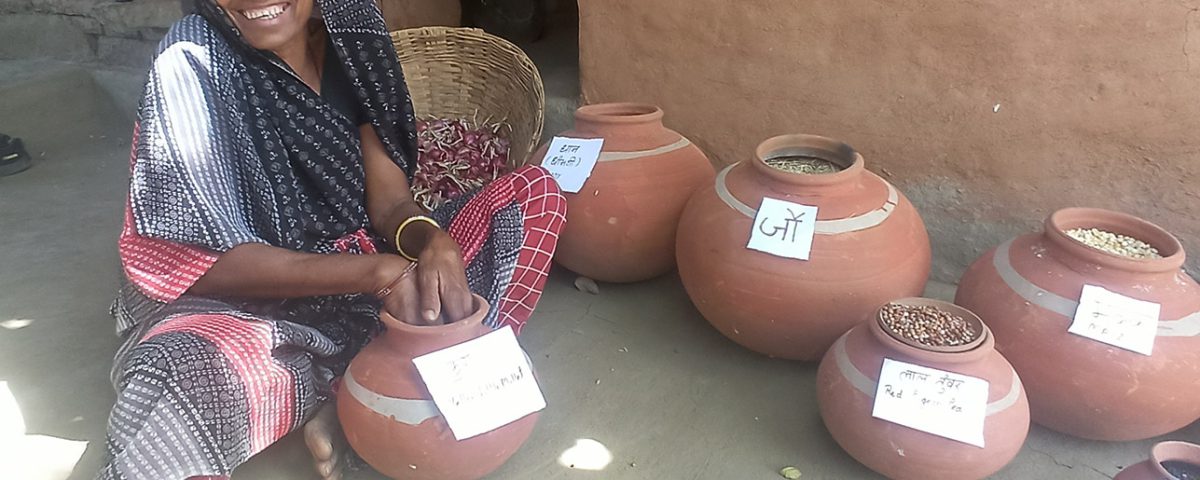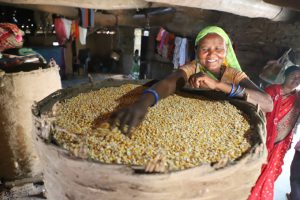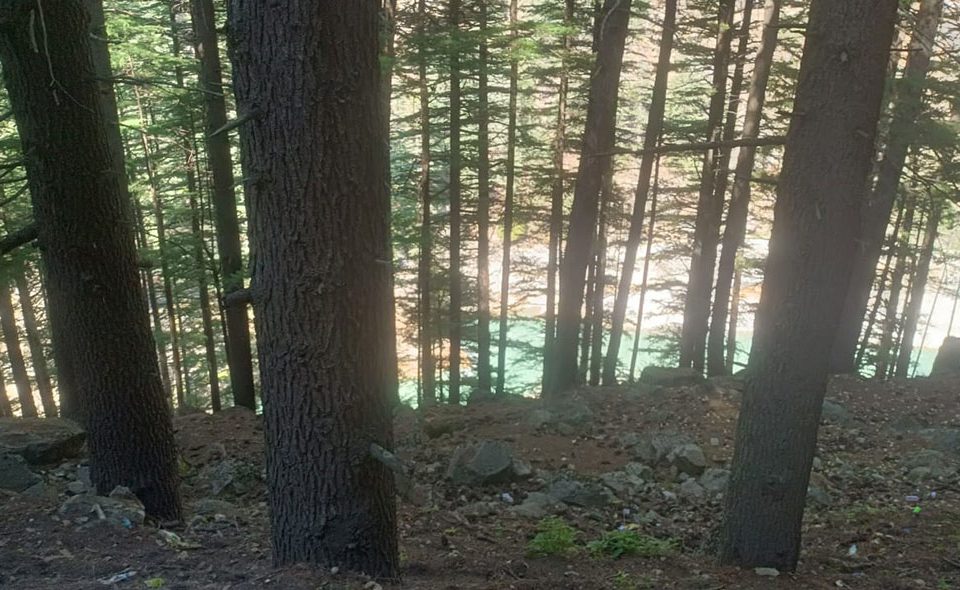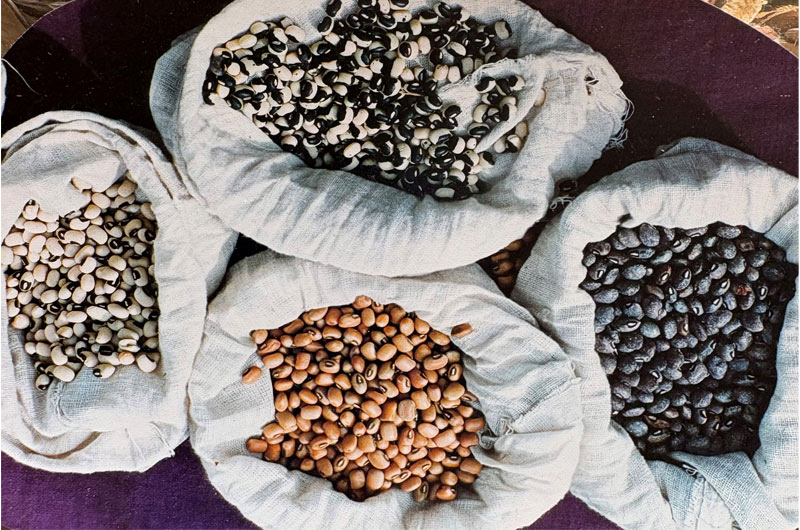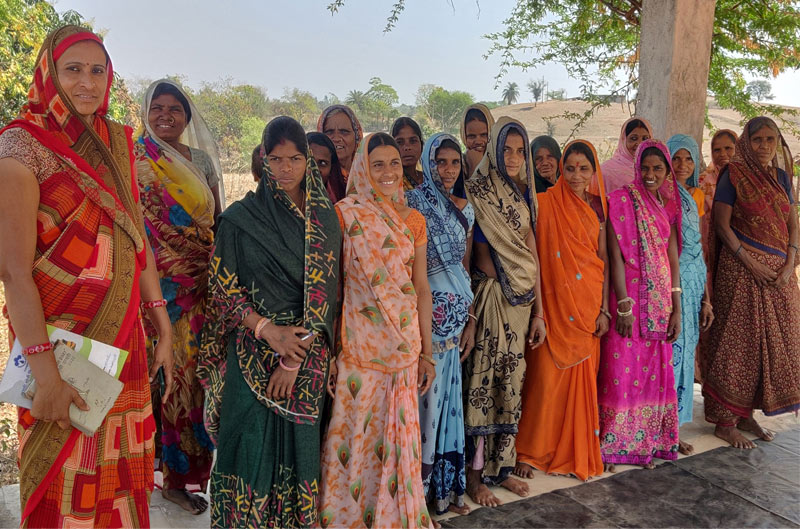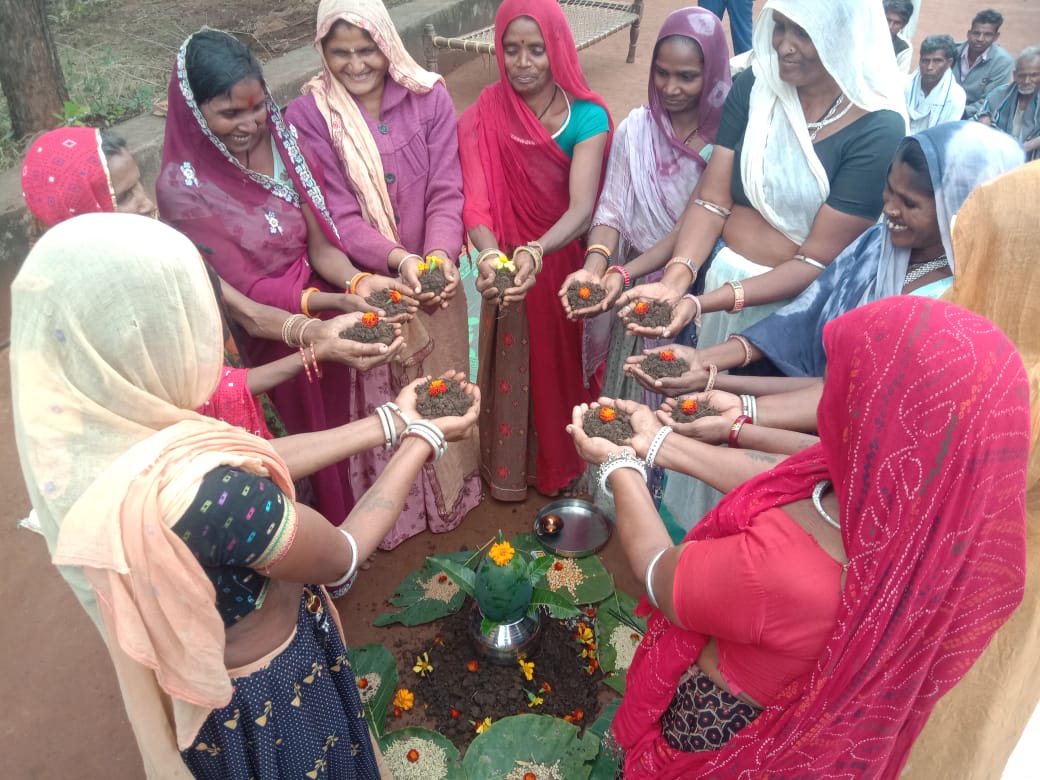
World Soil Day Celebrated in 1041 Villages
December 6, 2023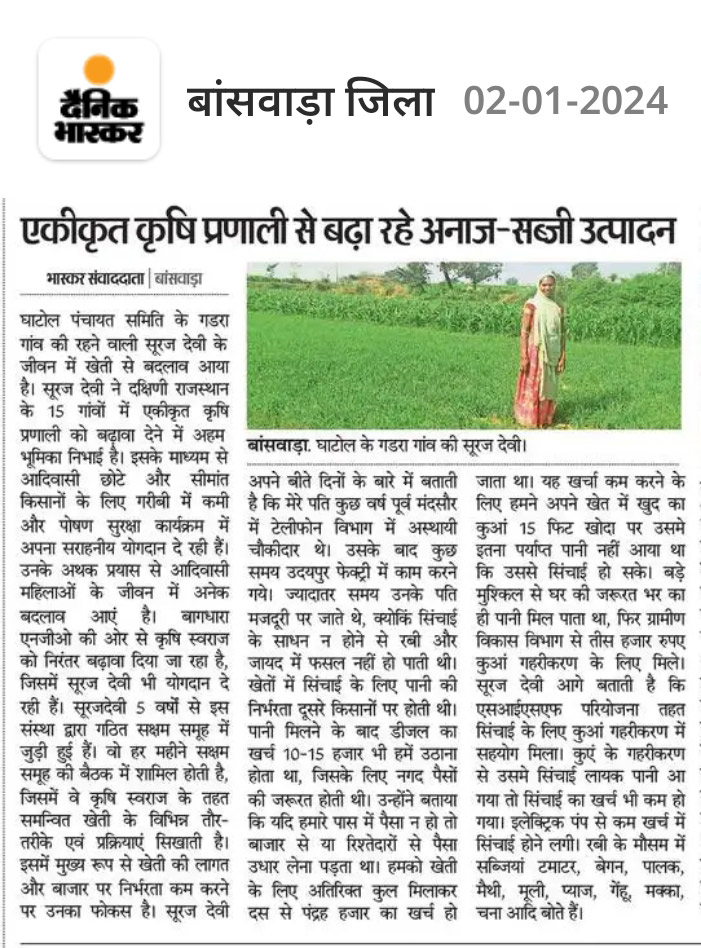
Swaraj’s principle of “do and learn” transforms livelihood and lives
January 2, 2024Farmers, especially tribal farmers in Rajasthan, Madhya Pradesh, and Gujarat, rely on agriculture and animal husbandry for their livelihood. Seeds are a priceless heritage of nature, forming the foundation of agriculture. For thousands of years, our ancestors have developed techniques through diligent efforts to examine and produce edible items such as grains, fruits, tubers, etc. Their hard work has given birth to the culture of farming, agriculture, and animal husbandry. The development of methods to identify high-quality seeds and keep them secure throughout the year has been a result of recognizing the importance of better-quality seeds. The conservation of seeds is being carried out by generations within our tribal community, becoming an integral part of our culture. The knowledge of identifying and preserving seeds is passed down from one generation to the next, persisting despite the growing influence of market forces. Today, the community continues to preserve its traditional knowledge, and this wisdom has evolved into the concept of Beej Swaraj. This is the culture of our tribal farmers in the region who have preserved hundreds of varieties of seeds. Not only have they saved seeds of various kinds, but they have also developed various techniques for consistently protecting seeds. However, due to the increasing influence of the market, the trend of using hybrid seeds began. Alongside this, expenses on other inputs such as irrigation, chemical fertilizers, and pesticides also increased. As a result, farmers, enticed by greed, found themselves trapped in the web of debt, while the soil and water of the fields became contaminated.
In such situations, we need to conserve indigenous seeds that are rich in local characteristics. This work can be started today and right now. Recently, we all have produced crops such as corn, lentils, rice, pigeon pea, peanuts, sesame, millet, finger millet, barnyard millet, little millet, foxtail millet, and others as part of the summer season. After harvesting and threshing the crops, we can grade the obtained seeds. By selecting seeds of uniform size, type, and color, and free from any pests or diseases, we can adopt various methods to collect and store them.
- Kabla: Traditional containers called "kabla" are made using bamboo or other wood for the storage of traditional seeds. These kablas are then coated with a mixture of clay and cow dung. Afterward, these kablas are dried in the sun, and they are used for storing seeds like corn, rice, and wheat. Before storage, neem leaves are spread at the bottom of the kabla, and seeds are placed intermittently, with neem leaves in between. This process is repeated until the kabla is filled to the top. Then, neem leaves are spread on the uppermost layer, followed by covering it with sagwan or coconut leaves, and finally sealing it with a mixture of cow dung and clay before packing.
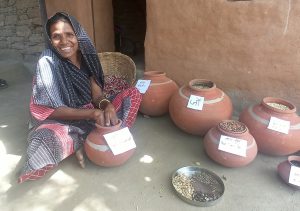 Storage in Pots: Various types of pulses such as urad, moong, chana, toor, jhala, tilhan, and other seeds that require less moisture compared to grains are kept in different-sized pots. Before placing the seeds in the pots, they are dried in the sun to ensure that there is no moisture or pests. Seeds that have been preserved are also sun-dried before mixing them with ash and filling the pots. Finally, the top part of the pot is sealed with a mixture of cow dung and clay before packing. When it's time for sowing or there is a need for seeds, the top layer is removed, and seeds are taken. This way, the seeds remain protected for 2 to 3
Storage in Pots: Various types of pulses such as urad, moong, chana, toor, jhala, tilhan, and other seeds that require less moisture compared to grains are kept in different-sized pots. Before placing the seeds in the pots, they are dried in the sun to ensure that there is no moisture or pests. Seeds that have been preserved are also sun-dried before mixing them with ash and filling the pots. Finally, the top part of the pot is sealed with a mixture of cow dung and clay before packing. When it's time for sowing or there is a need for seeds, the top layer is removed, and seeds are taken. This way, the seeds remain protected for 2 to 3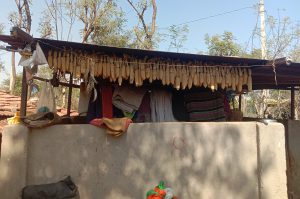
- Hanging Whole Fruits: Some crops, such as bottle gourd, ridge gourd, and sponge gourd, can be stored safely in their ripe fruits. In this method, the ripe bottle gourd is dried, its seeds are removed after cutting it open, and it is hollowed out. Then, other vegetable seeds are filled into it, sealed with cloth, and coated with a mixture of cow dung and cow urine. This helps in keeping the seeds safe.
- For the conservation of seeds of fruit-bearing vegetables such as eggplant, beans, corn, etc., it is advisable to create a bundle and hang it in a place where it receives sunlight and air but is protected from rain.
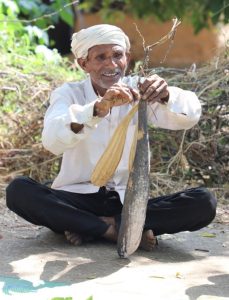
- To conserve onion and garlic seeds, tie them into bundles and hang them in a well-ventilated but dark room to keep them safe.
- The use of mustard and castor oil is also suitable for similarly preserving seeds. For this, the seeds are mixed with oil until the seeds no longer shine from the oil.
- To preserve seeds like ginger, turmeric, arbi (colocasia), musli, etc., a hole is dug in a corner of the field. Seeds are placed in the hole, and it is covered with grass and leaves.
- Attaching Seeds to Teak or Bamboo Leaves: For fruits with a slimy texture like tomatoes, cucumbers, etc., the seeds are stuck onto teak or bamboo leaves. These leaves are then hung at an elevated place. When there is a need for seeds in the next season, the leaves are rubbed to extract the seeds for sowing. This ensures the safety of the seeds.
By adopting these methods, one can have pure indigenous seeds readily available at home. This approach helps avoid any kind of pests in the seeds, and there is no need to rely on purchasing seeds from the market, promoting self-sufficiency in seed management.
Subscribe to our newsletter!


